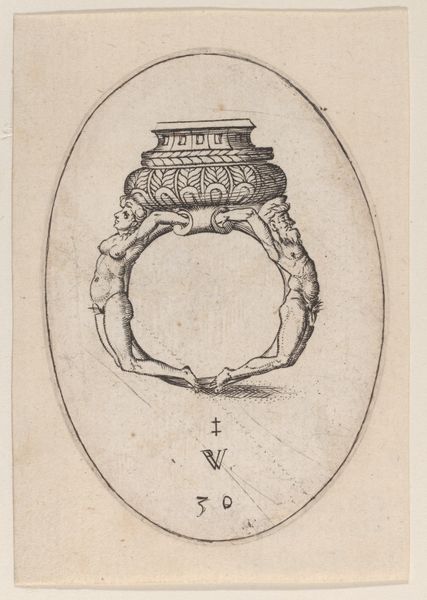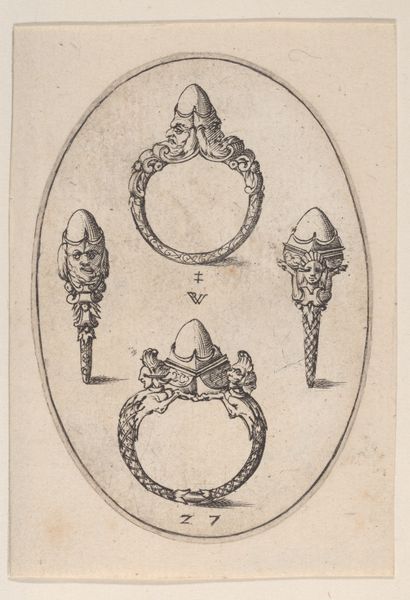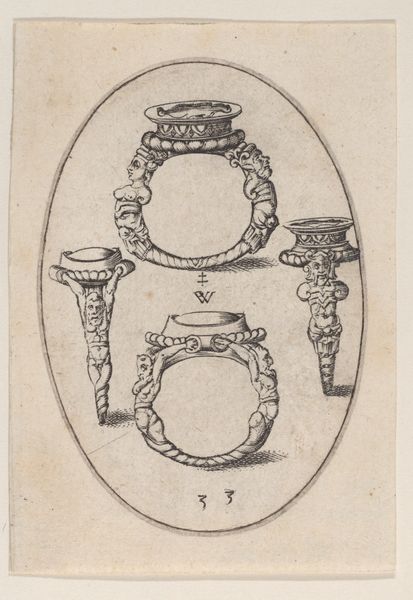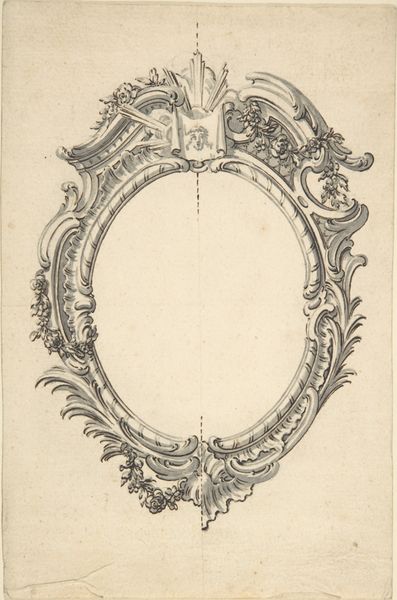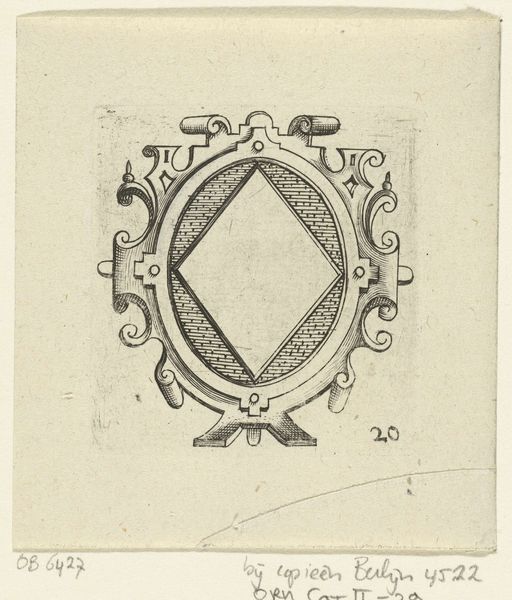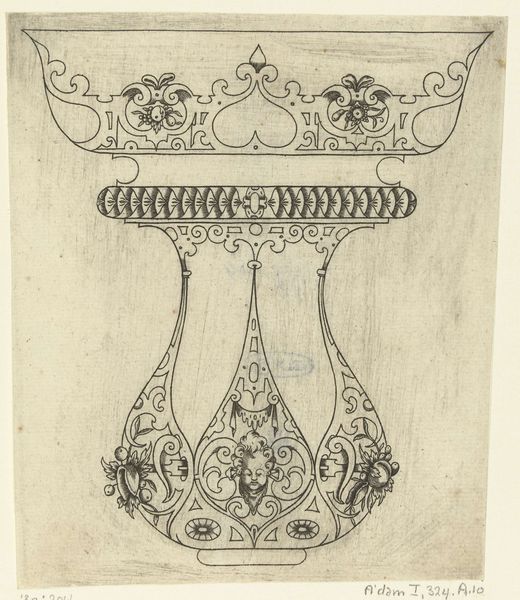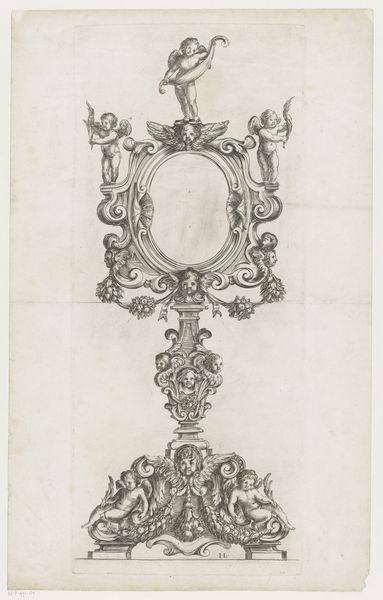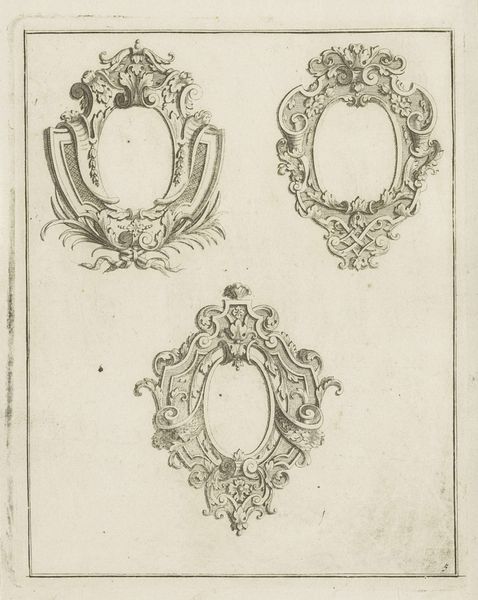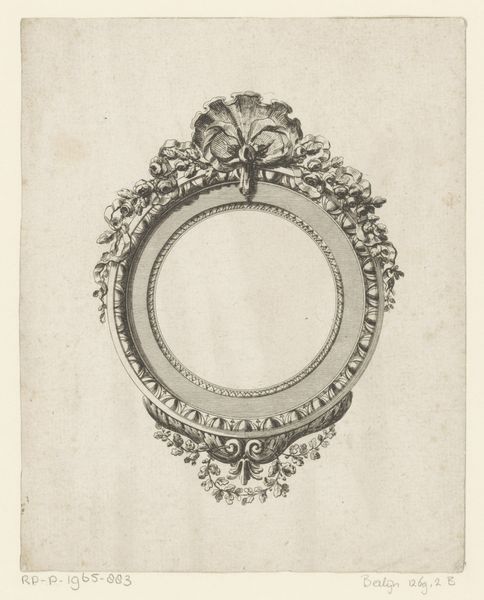
Design for a Ring with a Large Faceted Gemstone, Plate 34 from 'Livre d'Aneaux d'Orfevrerie' 1561
0:00
0:00
drawing, print, engraving
#
drawing
# print
#
old engraving style
#
figuration
#
11_renaissance
#
geometric
#
engraving
Dimensions: Plate: 2 11/16 × 1 7/8 in. (6.9 × 4.8 cm) [oval plate] Sheet: 3 1/16 × 2 3/16 in. (7.8 × 5.5 cm) [cut]
Copyright: Public Domain
Curator: Pierre Woeiriot de Bouzey II created this engraving, "Design for a Ring with a Large Faceted Gemstone," in 1561, one of a series intended as inspiration for goldsmiths. Editor: My first thought is how bizarrely unsettling this design is! It's visually fascinating, but there’s something deeply unnerving about those figures seemingly contorted to support the ring. Curator: Well, let's unpack that. Notice the intricate details—the hatching and cross-hatching that define the forms and create depth. And the carefully considered composition; the ring’s circular shape is echoed by the oval frame around it, establishing visual harmony. Editor: Yet that harmony is disrupted by the inherent violence of the design! The figures—they look like enslaved people, forced to bear the weight of aristocratic excess. The gemstone sits atop like a pyramid over subjugated bodies. I see it as an allegory of social injustice. Curator: I'd argue that it's too simplistic to label it merely as "violence" or "oppression." Consider the Mannerist aesthetic—the elongated bodies, the dramatic poses, the inherent artifice. Woeiriot is exploring the boundaries of form, challenging our expectations of beauty. The print embodies a mastery of line, pushing engraving to new heights in visualizing luxury. Editor: But whose luxury? And at what cost? By ignoring the social implications, aren’t we complicit in perpetuating the very power structures the artwork embodies? Surely, an analysis of this image demands we address the human cost embedded within this so-called beautiful object. The little men contorted in agony bear their silent testimony. Curator: But focusing solely on these figures negates the sheer artistry of the design. Look at the precise execution of the gemstone’s facets or the swirling patterns of the supporting framework. It's a triumph of technical skill. Editor: Perhaps. But as Walter Benjamin so eloquently stated, "There is no document of civilization which is not at the same time a document of barbarism." I can't divorce the artistry from the ethics it implicitly endorses. Curator: I can appreciate that viewpoint, though I'd suggest that we can admire the artistic merit without necessarily endorsing the historical context. Thank you for adding your perspective to the appreciation of this piece. Editor: And thank you for helping me deepen my engagement with this powerful artifact, its unsettling qualities notwithstanding.
Comments
No comments
Be the first to comment and join the conversation on the ultimate creative platform.
